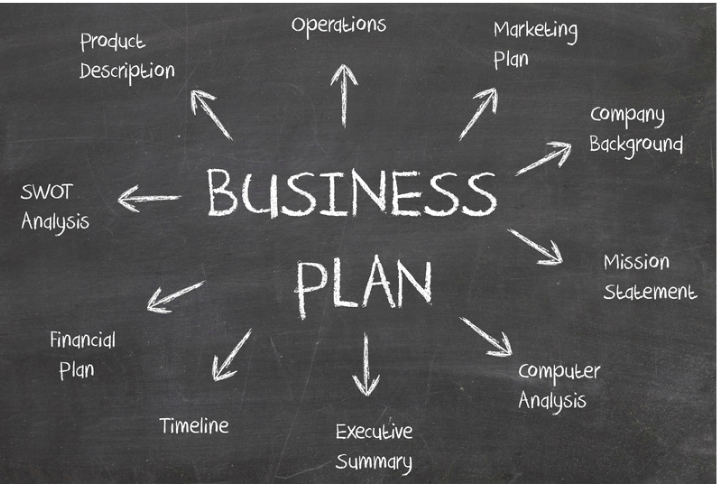Board meetings are a fact of life for performing arts organizations. Love them or hate them, successful board meetings provide an opportunity to further your organizational plans, give valued board members a chance to share expertise, and cement your position as director and visionary. Whether your quarter went exactly as planned, or you fell far short of your goal, now is the time to deliver results and set new targets.
A great board packet includes explanations and analysis. When done well, they set a cadence for future meetings while setting expectations for the board. Let's examine some keys to planning for your board allows you to steer the itinerary in a productive manner.
 Pre-meeting agenda
Pre-meeting agendaMake the most of your board's time by sending out your agenda in advance. It's best to do this several days before the meeting. If agenda items need clarity, your board members can point these out, and you'll have an opportunity to flesh out ideas.
For most performing arts organizations, board seats are awarded through factors outside of your control. Thus, the board makeup may bring opposing ideas, and you may meet headwinds when sharing the plans you've exhaustively laid out. Sharing your agenda gives you the opportunity to gather feedback that keeps goals intact.
Remember, each member has an area of expertise, and your board can help you make progress in areas like donor outreach, marketing or expanding your network. Nobody expects you to be a superhero, so relying on the guidance of board members is critical to your success. Invite specific members to share ideas prior to your meeting, and ask for their help in advance when you know your agenda includes topics that may not have unanimous agreement.
Or course, your agenda is based on a cohesive, clear board report that describes quarterly initiatives, explains new action items, and sets the course for the upcoming quarter. Summarizing your agenda is made easy by the work you've done and the analysis of that work. Here are the key elements of your report.
Update on progress since your last meeting
 You set clear initiatives in your last meeting -- increase season pass sales by 5%; hire a new box office manager; earn $5,000 in contributions from new donors. Your meeting must start with the targets you set and a status update around reaching those targets.
You set clear initiatives in your last meeting -- increase season pass sales by 5%; hire a new box office manager; earn $5,000 in contributions from new donors. Your meeting must start with the targets you set and a status update around reaching those targets.
The targets you set fall into one of two categories: "majors" and "minors".
Updating your Facebook page on a daily basis does not carry the same urgency as meeting fundraising objectives for critical
improvements. You need to start with updates on majors yielding one of three outcomes: you achieved targets, you fell short, or progress was stalled. Outperforming most targets may suggest that you set the bar too low. Acknowledge that and set new sights for your next meeting. If you blew it out of the park on all targets, consider doubling down on some of those goals to demonstrate your commitment -- and hopefully, earn even greater success.
Don't shy away from delivering less than stellar results by avoiding the topic. Astute board members will have taken notes on your projections, and they are eager to hear how your plans turned out. By avoiding challenging topics, you only highlight the fact that you failed.
If your major initiatives fell short, don't sugarcoat results. Dive in with an analysis of exactly why you fell short, and what you plan to do to change the outcomes. For minors, sandwich poor outcomes around great results. Highlight the positive, then deliver where you fell short before switching back to efforts that paid off.
When discussing any failure, you need to do your homework to understand why results fell short. Maybe an emergency arose that demanded a significant amount of your time and resources. Perhaps you were not diligent in your prioritization and let small tasks
bubble to the top of your queue. In any case, share an honest assessment of why didn't achieve objectives then detail your plans on how you will prevent a repeat performance.
Boards admire executives that do not shirk from difficult topics, and they demand to know your plans for ensuring the scenario is not repeated. If you need to revamp a target or shelve a prior objective, explain the reasons for your decision, so you can move forward with your agenda.
Metrics matter -- aggregating your data for board reports
After covering your quarterly initiatives, you'll want to give an overview of the financial health of the organization. Measures are either qualitative or quantitative, and the latter will win out in importance every time. For example, saying, "customers are happier", is quite different from demonstrating customer happiness with rising results from your Net Promotor Score surveys.
Aggregating numeric data into meaningful information takes time and analysis. Simply showing a tally of numbers doesn't tell a story, so it is up to you to take that data and break it down into insights that give your board a clear picture of your organization's finances, growth and future needs.
Obviously, your accounting software includes excellent reports such as profit and loss statements, balance sheets , and statements of cash flow that are an essential part of any board report. (Include 2-3 years of comparative financials.) The reports show the state of your finances using uniform measures. As your theatre's executive director, you may need to explain fundraising strategies to board members, but you will never need to explain GAAP principles.

Don't let your board meeting get tripped up by ambiguous figures in your P&L. For example, the report might show a significant increase in labor costs in one quarter versus another quarter. On its surface, it might suggest you are failing at controlling expenses. However, if revenues rose in tandem with labor costs, a comparative P&L that measures profits and losses as a percentage of total revenue provides clarity around those costs. With percentage-based P&Ls, that "poor" quarter of high expenses might actually show that labor was only 18% of revenue versus 24% during the period of lower sales.
The dollars from pre-selling season passes aren't yet earned, so if an unexpected calamity interrupts the delivery of your "product," these unearned revenues must be returned to patrons. Statements of cash flow show where you are in terms of revenues earned -- not those simply collected. Further, many ticketing softwares provide unearned revenue reports from ticket or gift card sales that help support cash flow reports and show the true nature of cash on hand.
With ticketing platform reports, it can be easy to measure results on a weekly, quarterly or annual basis whether it is determining total revenue, number of new customers, or recurring donations collected. Investigate your software to discover which reports show trends in your organization's finances. If pre-formatted data or charts aren't offered, you'll certainly have the ability to export data. Find an expert to help you drill into the data using Google Sheets or Excel to create images that tell the story the numbers convey.
 Important report metrics to share that can be elucidated from your ticketing platform might include:
Important report metrics to share that can be elucidated from your ticketing platform might include:
1. Number of days to achieve a given percentage of sales
2. Year over year results for season pass sales
3. Comparison of number of new customers per quarter
4. Lost revenue through comps and coupons
All of these reports demonstrate your effectiveness in achieving goals. Weekly trend analysis helps you spot changes, so you can adjust weeks or months ahead of your next board meeting to deliver great results.
Budget - Past and Future
No report is complete without a budget. Show your projections for the last quarter. How accurate was your forecast? The key to budget planning is to be as accurate as possible -- not to beat revenue projections or spend less than budgeted.
If your numbers are wildly off, buckle down to figure out why you miscalculated. Showing the percentage of goal helps pin down areas that need more focus. Finally, highlight big budget items with an explanation around those figures.
Future obstacles and opportunities
At this writing, the effects of the coronavirus are being felt by markets around the world. In the events space, the fear caused by highly
transmissible viruses can frighten the most seasoned professionals. Understand the external factors what might impact your organization's goals and work to mitigate them.
 As an example, an upcoming tech conference expecting thousands has issued "no handshake" and required hand washing policies. Not only do these seemingly small steps actually help reduce the chance of spread, but the preparation shown by the conference producers helps allay attendee fears. What steps can you take to guard against upcoming obstacles?
As an example, an upcoming tech conference expecting thousands has issued "no handshake" and required hand washing policies. Not only do these seemingly small steps actually help reduce the chance of spread, but the preparation shown by the conference producers helps allay attendee fears. What steps can you take to guard against upcoming obstacles?
On the opposite end, what opportunities might arise for the future? Share trends that might have a positive effect on your marketing. Perhaps a neighboring city theatre's closing presents favorable prices on used equipment. If your ticketing software contract is up for renewal, maybe it's time to explore alternatives that earn more revenue or save time and money.
With each opportunity, present an analysis of options and costs for review. When comparing vendors, list the pros and cons of each choice to give board members insight into the choices. For example, an assessment of software, might compare ease-of-use for staff training, term contracts (or lack thereof), total costs and savings, and mobile friendliness. A comprehensive picture makes decision making easy.
Naming your upcoming majors and minors
You've shared your targets, financials and budget, and you now have some insight around future challenges and opportunities. It's time to name your upcoming goals for the quarter.
You will have achieved some of last quarter's initiatives. Others might be shelved or need more work. After all of the analysis you've done, your upcoming targets will be easy to discern. Name 2-3 each of your major goals along with your minor objectives, then detail how you'll make them happen. This is an apt time to ask members for feedback or assistance to make introductions, provide expertise, or simply play "devil's advocate." Refine any initiatives before bringing your meeting to an end.
Preparing for your next meeting
Your meeting was a success! You painted a clear picture for the board, demonstrated leadership, and you've nailed down your new targets. Follow-up with a personal thanks to each board member.
Immediately after setting your goals for the quarter, figure out how you are going to measure your progress on new initiatives. It's important to start putting together spreadsheets now, so you can begin to consistently measure weekly results.
Only with consistent measurement can you spot trends that demonstrate momentum or indicate required shifts in your strategies. Chart your progress to make the analysis for your next board come together more manageably.
Planning makes more perfect
Board meetings are an integral part of community theatres, performing arts centers, and most non-profits. With detailed planning and analysis, you help members understand the past while setting expectations for the future. Great boards also endorse your place as visionary and leader for your organization. Best of all, when you have the full backing of your board, you'll have free reign to execute on your ideas and grow.
DOWNLOAD THE GUIDE IN PDF FORMAT
Pre-planning-
- - getting the board centered around your agenda
-
- - aggregating data that paint a picture of where you are headed
-
- - detail favorable changes or upcoming headwinds
- - defining future initiatives